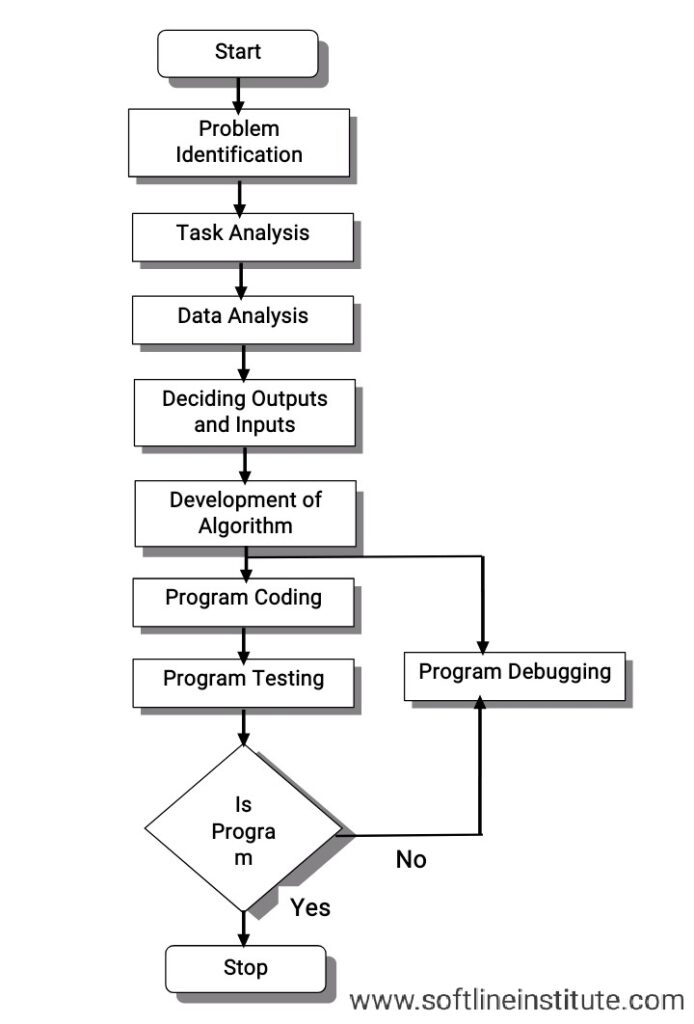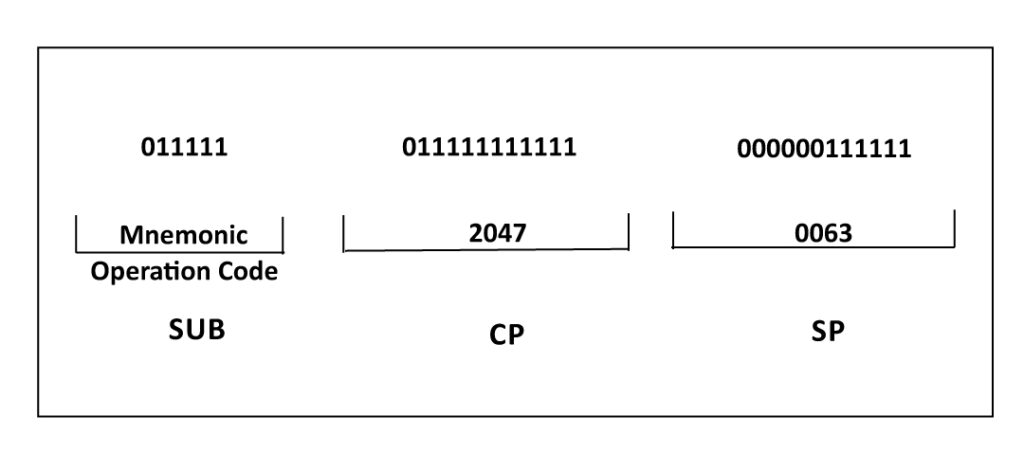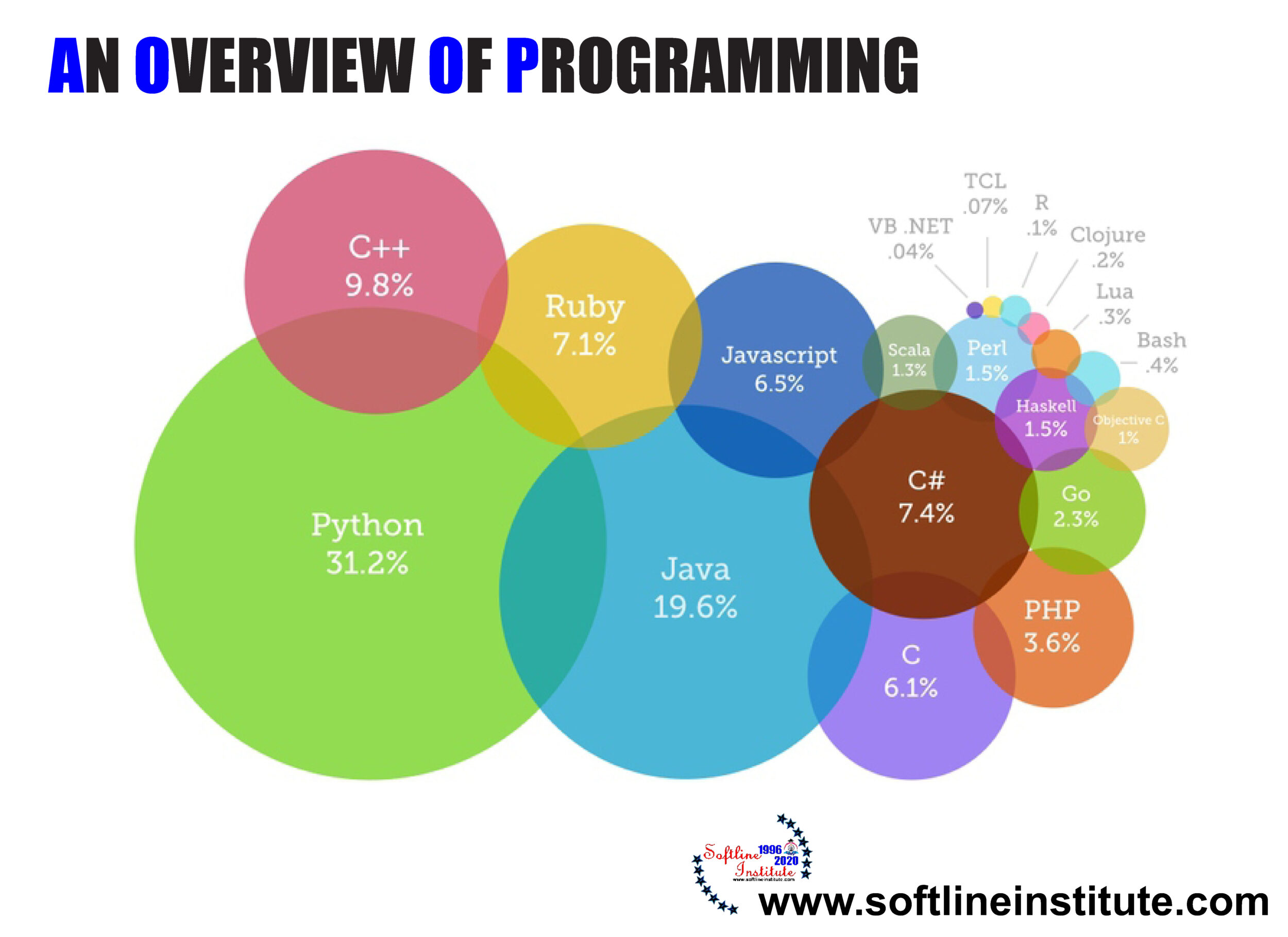There is hardly any field left into which Computers have not make forays. We have reached a point where problem, be it of scientific, commercial or any other nature, can be solved by a Computer. There are tonnes and tonnes of Software available in every conceivable fields. These Software are nothing but just a collection of programs. Irrespective of the applications for which the program is mean, certain steps need to be followed while developing it. Developing any but the simplest of programs require a systematic step by step approach. (Programming language)

As indicate in the figure the program cycle begins with the identification of the problem to be computerise. This phase begins as soon as someone-either the user or a member of the data processing department sees a problem or opportunity which suggests a programming solution. At such times the programmer analyst and the user meet to develop information in response to the following three questions:
a) What is the problem perceive by the user
b) What are the goals to be achieve by the solution
c) What benefits will result from achieving the Solution
In the Task Analysis phase the problem is thoroughly analyse. And a system solution propose take into all other alternative solutions possible. While arriving at the solution the known and unknown parameters are identify. And the constraints under which the problem is to be solve and state.
During the Data Analysis phase the Data, information and Documents relevant of the program are collected and the following details are chalked out:
a) Outputs to produce and its layout
b) Inputs that must be receive
c) Data to be receive
d) Operations to be perform to produce outputs and maintain files
In short the Functional specifications are determine during this stage in programming.
Once the problem and its inputs/outputs have been analysed next comes the all important step of developing a solution procedure (algorithm) for the problem. For this sequence of operations to be performed in the process of solving the problem are identified and the program logic is planned, preferably using a program flowchart. Once the Algorithm is ready next comes the step of converting this algorithm into a program of Instructions for the Computer in a suitable Language. Next the program written is keyed into the Computer and tested thoroughly for different sets of the data. Quite often there are errors (bugs) in the program. All these errors which may either be in writing the program or in the logic of program are then remove.
Programming language Classification
To Communicate between two parties, whether they are machines or human beings. Some common terminologies need. Of courser this language or terminology must understand by both the parties. To communicate with a Computer it has to instruct to carry out various tasks. Like: What operations to perform? How to present Results? When and how to make certain decisions? and so on. These set of instructions have to communicate to the Computer through a language called “Programming Language”.
The set of Instructions written in a programming Language as known as a Program.
There exist three levels of Programming Languages for communicating the instructions to the Computer. They are:
a) Machine Languages (low-level languages)
b) Assembly languages
c) Procedure Oriented Languages (high-level languages)
d) Fourth Generation languages (4GLs)
a) Machine Language
Computers are made of two-state electronic components which can understand only pulse and no-pulse (or 1 and 0) conditions. Therefore, the instructions given to the Computer and the the data fed to it must be written using binary numbers 1 and 0. A computer’s machine language consists of such strings of binary numbers.
Computers do not understand English , Hindi or any other such common language. They respond only to Machine language. Added to this, computers are not identical in design. Therefore, each Computer has its own MAchine Language. However the script, 1 and 0 is same for all Computers. This poses several problem for the users.
It is very tedious to understand and remember the various combinations of 1’s and 0’s representing numerous data and instructions. In addition to remembering these codes. The programmer is also require to keep the track of the Storage Locations of data and instructions. It takes several months to write programs. Also writing error free instructions is a slow process. Checking Instructions to locate errors is about as traumatic as writing them initially. And if a program has to modify at later date, the work involved may take weeks to finish. Thus Machine Language programs are difficult to write and maintain.
b) Assembly Language
To ease the programmer’s burden (pronounced ne-mon-ik) operation codes were developed in 1950s. One of the first steps in improving the program preparation process was to replace the numeric language operation codes with mnemonics.
Thus an Assembly Language uses mnemonic codes (abbreviations) rather than numeric codes (as use in machine language). For Example, ADD is use as a symbolic operation code to represent addition. And SUB is use for subtraction. Memory location containing data are given names such as TOTAL, MARKS, TIME etc. Thus instead of referring a location using its number now it can be referred using the name given to it.
As the Computer understand only machine language instructions, a program written in assembly language must be translated into machine language before it can be executed. this program is done by another program called “Assembler”. For Example the instructions SUBSP, CP will translate by the assembler into corresponding machine language instruction as;

Assembly language has several advantages over Machine Language. First it saves Programmer’s time. Fewer errors are made, and those that are made are easier to find. Also Assembly Language programs are easier to modify than Machine Language programs. However assembly language is again a Machine oriented language and hence the program has to be different for different machines. The Programmer should remember machine characteristics when he prepares a program.
c) Third Generation Languages
The earlier assembler programs produced only one machine language instruction. To speed up program development new assemblers were developed. Which could produce several machine language instruction for one assembly language instructions. For example: the programmer might write READ FILE and the assembler would then produce a detailed series of Machine Language Instructions. To read data from the file on the disk and store it in the memory. Thus the programmer was relieved of the task of writing an instruction for every machine operation performed. This development led to the development of the THird Level Languages.
The most important characteristics of the High level language is that it is Machine independent. And a program written in High level Language can be run on Computers of different makes with little or no modification.
A program written in High level language is known as a ‘source program’ and can be run on different machines using different translators. The translated program is called the ‘object program’. The major disadvantage of High Level languages is that they take extra time for conversion. And thus are less efficient as compared to the Machine Language Programs.
d) Fourth Generation Programming Language
A new set of programming Languages are coming to the fore which allow even a non-technical user to interact with the computer in a simpler and more friendly manner. These are known as Fourth Generation Languages or simply, 4GLs. These languages are non-procedural, i.e. the users do not define the detailed procedure required to arrive at the final result. Example of 4GLs are dBASE, Fox Pro, PC/FOCUS etc.
